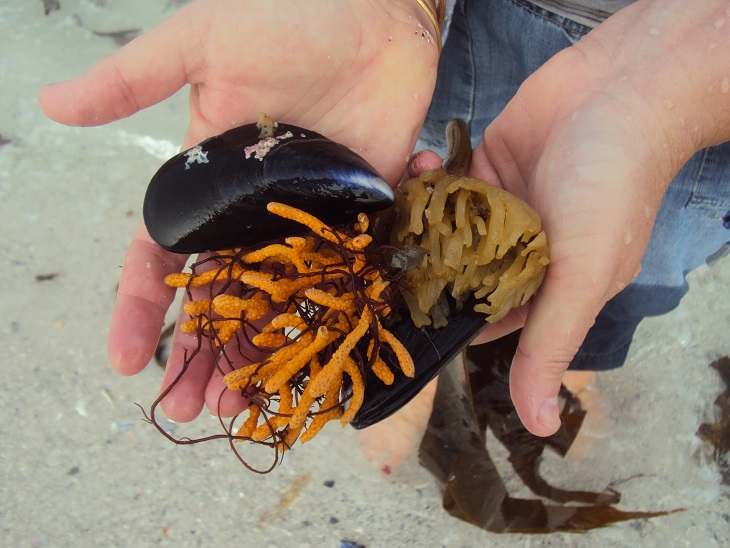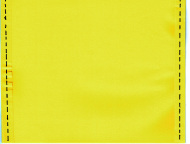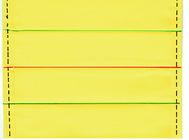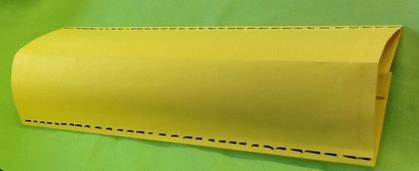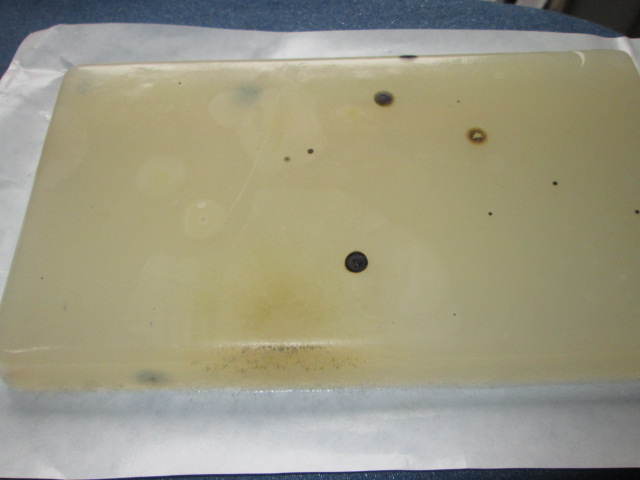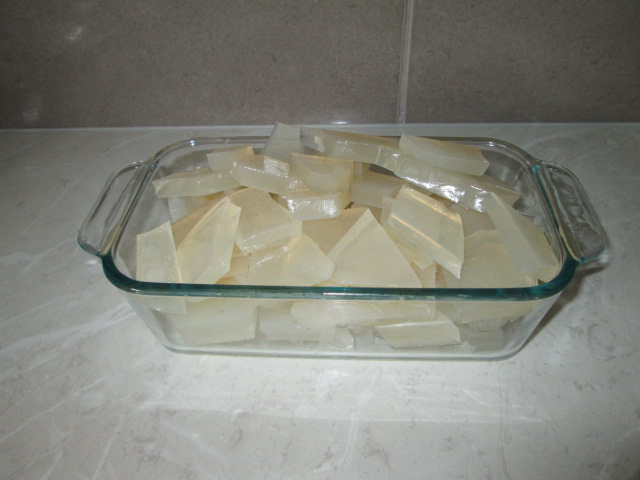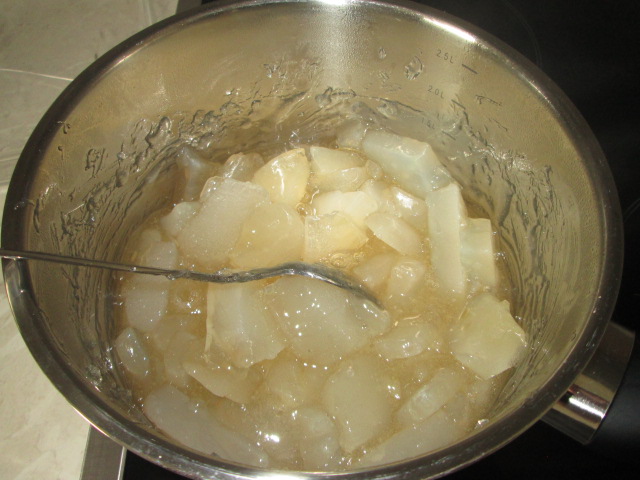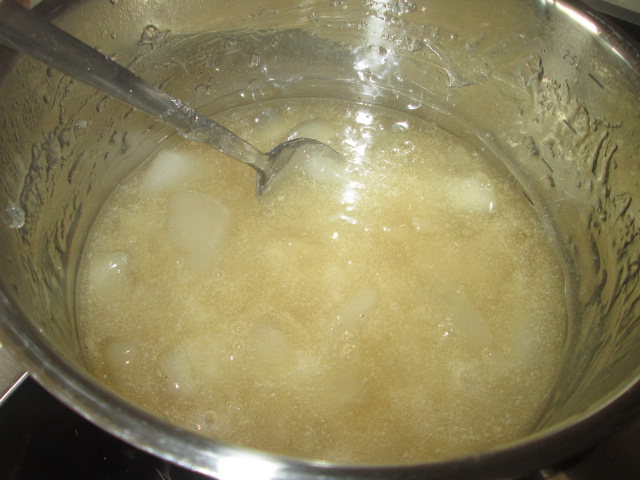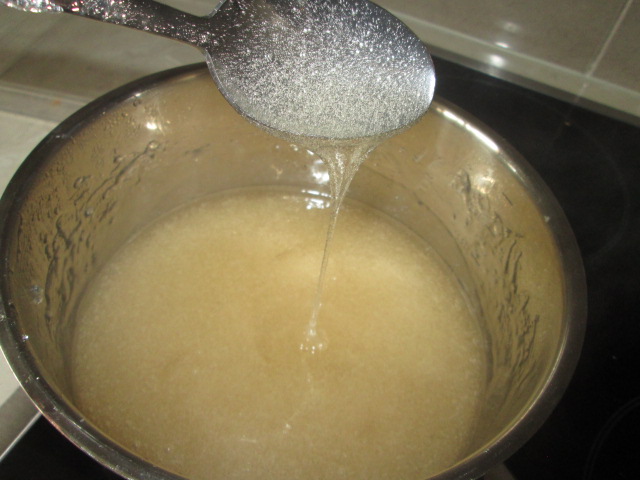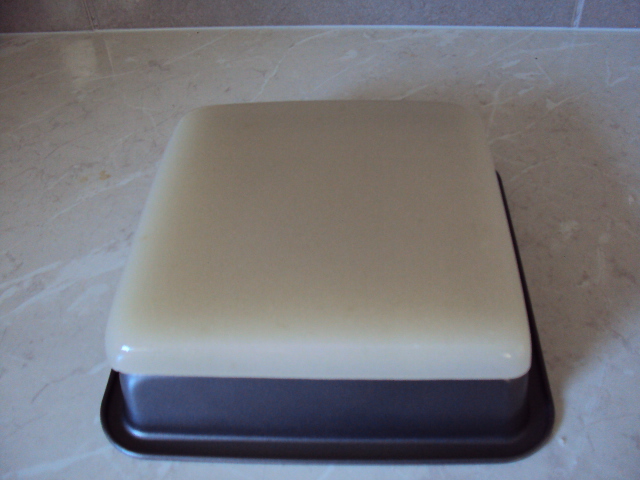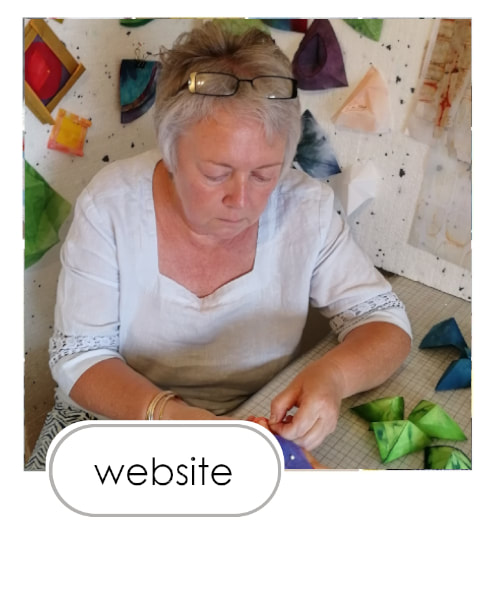Hanging Sleeves Not one of my favourite jobs to do - but if you are going to do something , do it properly, and a nicely made and decently sewn on hanging sleeve makes or breaks even the most amazing quilt. If you don't put it on straight, then the quilt will hang forever wonky. If you make it too tight, then the batton will leave an ugly bump in the front of the quilt. If you put it to high it will show above the top line of the quilt, but too low and the top will droop, or even worse, flop down. So maybe, it is more important to spend time on this little loved part of art quilt making than anything else! This is the technique I use for all my quilts that are to hang freely. I find it makes an excellent hanging sleeve and the instructions are foolproof. I have taken them from the Contemporary Quilt challenge website, and have copied and pasted the appropriate section from the website. If you would like to visit the website please clickhere. (While you are there, you may want to consider making a quilt to enter the challenge - go on, what have you got to lose??)
"D" Sleeve (instructions taken from the contemporary quilt challenge website)
These instructions are for a 4 inch wide sleeve. If it is set 1inch down from the top edge and 1in in from the sides it will not show once the quilt is hanging. It will be able to accommodate a wooden batten and not create a bulge in the fromt of the quilt.
and now on to something a little more exciting........
Mouldy agar agar plates
Back just before Christmas I was busy experimenting with a vegetarian alternative to gelatine plates. You can read the blog post I made and see the recipes for a selection of different types of gelli type plates here. Well, it is now 1st of March (already!!) and my weekly look at the agar agar plates has revealed..... mould!. Drat. Perhaps it should not be a surprise. I have not refridgerated them and they have been sitting on a shelf in my garage which hasn't dropped below 25 degrees.They were stored in between 2 sheets of freezer paper and in a plastic bag to keep the dust off. Interestingly, the gelatine based plate is still fine. So what to do? I obviously don't want to inhale any dodgy spores; not sure if they are bad or not, but I would rather not find out the hard way. So I have a choice - throw them away, or see if I can 'refresh' them in some way. In the interest of science, I chose the latter, but if you feel the risk is too high, then do throw yours away. Refreshing an agar agar gelli type plate This is what I did: With a face mask on I washed the plate under running water, rubbing off the blobs of mould and any furry bits. I then cut it up into small chunks with a pair of scissors, and placed it into a glass microwave proof bowl (not for food use). I chose this method as this is what I do with my gelatine based plates - and it works a treat. I started by zapping the agar agar chunks in the microwave on full power for 2 minutes. This would normally see my gelatine turn to liquid and the process would be almost complete. However, the agar agar did not budge. So, I gave it another minute, but nothing was happening. Being mindful of the process I went through when making the agar agar plate, I decided to abandon the microwave as a method of melting the lumps and tipped the whole lot into my old dyeing saucepan. And I was very glad I did! After 10 minutes on a medium heat this is how the agar agar lumps looked. I was worried about it catching on the bottom of the pan, so I stayed with it and stirred approximately every minute. Here we are after 15 minutes. About half melted. Stay with it and keep stirring! It took around 20 minutes in total to melt all of the lumps and get a thin, runny liquid. To be on the safe side I decided to give it a good boil, to kill any spores and / or lurgy. Then I poured it back into my mould and waited to see if it would set. Good news!! I think the newly reformed agar agar plate is even better than before - and no more mould either! As ever, I will keep you posted on how it keeps. I am going to leave it in the garage again - so will see how long it lasts. Sorry for it being a short one this week - I'm working on a large project this week and if it turns out well I will share next time. Thanks for reading.
|
|
